April 2005
Copyright Gregory J. Scott
Photos in Arizona, New Mexico, Texas,
Louisiana, and Georgia.
Arizona Hummingbirds
 3268
3268
Broadbill female (?) at Firecracker Penstemon in ambient sunlight with
supplemental flash.
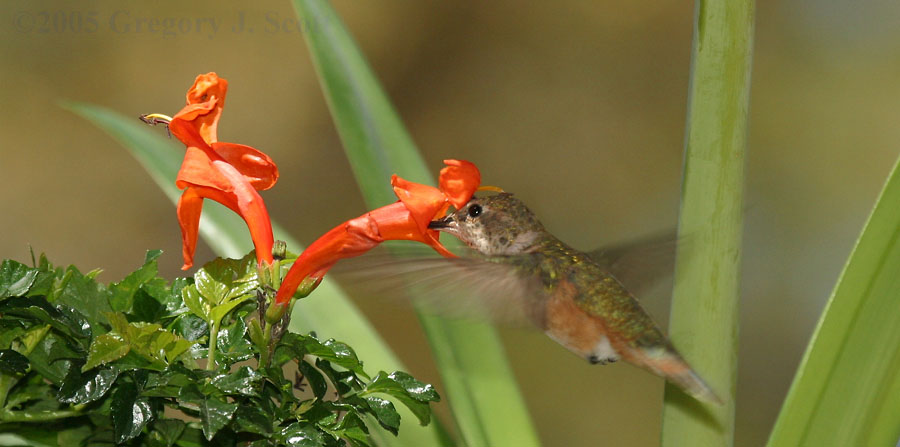 3603
3603
Rufous at Cape Honeysuckle
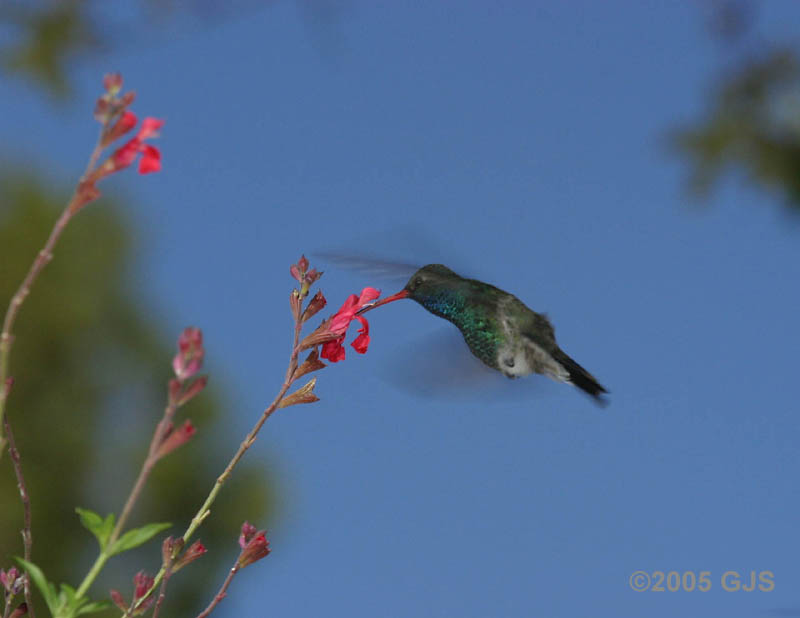 3605
3605
Broadbill male at Salvia Gregii in Sunlight
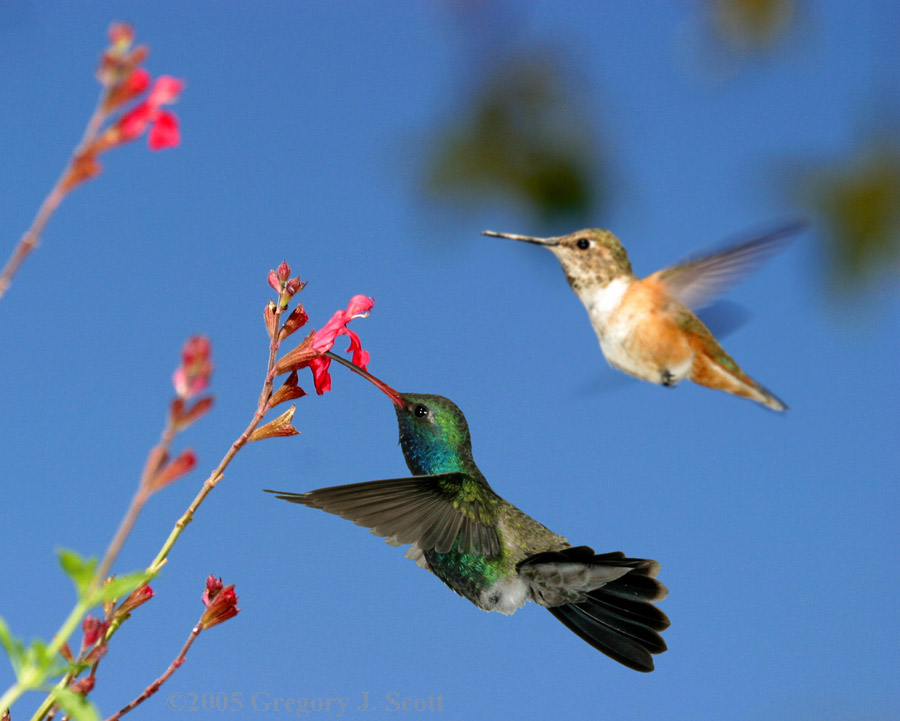 3592
and 3359
3592
and 3359
The Broadbills and the Ruby Throated Hummingbirds both looked very fat
to me this year. Don't you think he has a pot belly?
This is a composite photo. I blurred the rufous hummer a bit with a
gaussian blur, to make it appear out of focus, and in the background.
I did this to "subconsciously" explain to the viewer why the
broadbillis sharper and bigger. The explaination is a lie, however.
The flash light stops the motion of the broadbill's wing entirely, but
The rufous wing is a blur.
That's what I camoflaged by blurring the otherwise fairly sharp rufous.
If I didn't, the fakery would be more obvious. Most naive viewers won't
see the fakery, I think.
There's a bit of a "halo" around the belly down that should be blended
better.
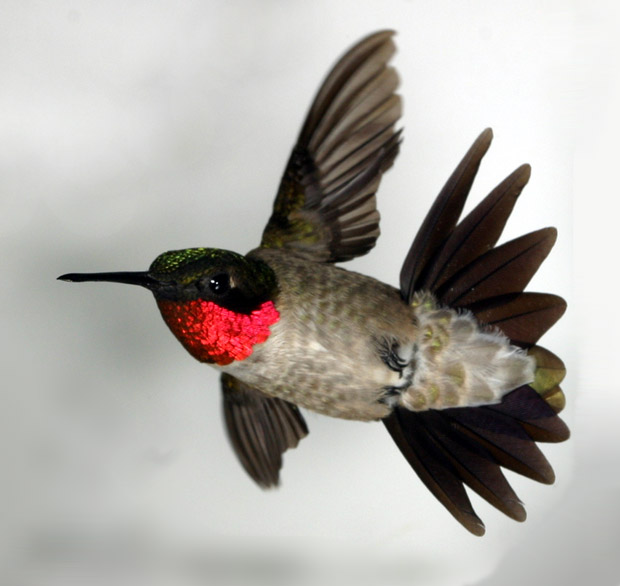 4147
4147
Ugly pose? This is an ineresting pose, but I would NOT consider it
graceful.
I'm not sure why we consider some poses more graceful.
Apart from "composition", I think this bird's posture would be
uncomfortable if we would try to mimic it!
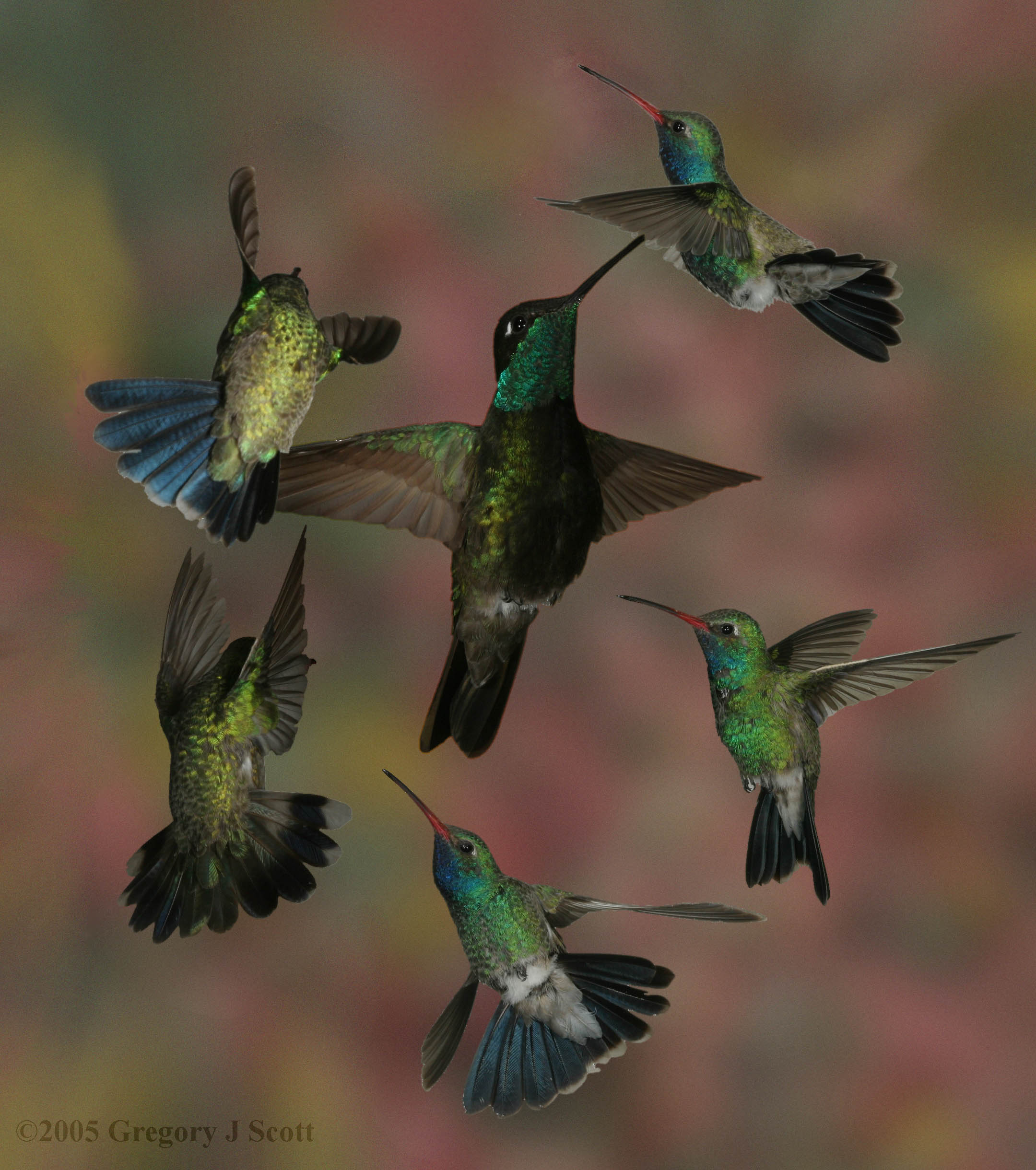 200504 Melee
200504 Melee
I saw the photo on the internet, so it MUST be true! Below you see what
is more typical of reality.
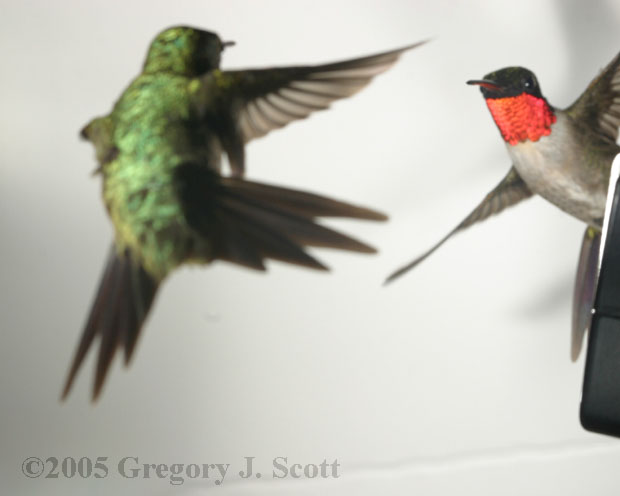 4254
4254
An actual fight. At least one bird is out of frame and out of focus.
It's some sort of scientific law.
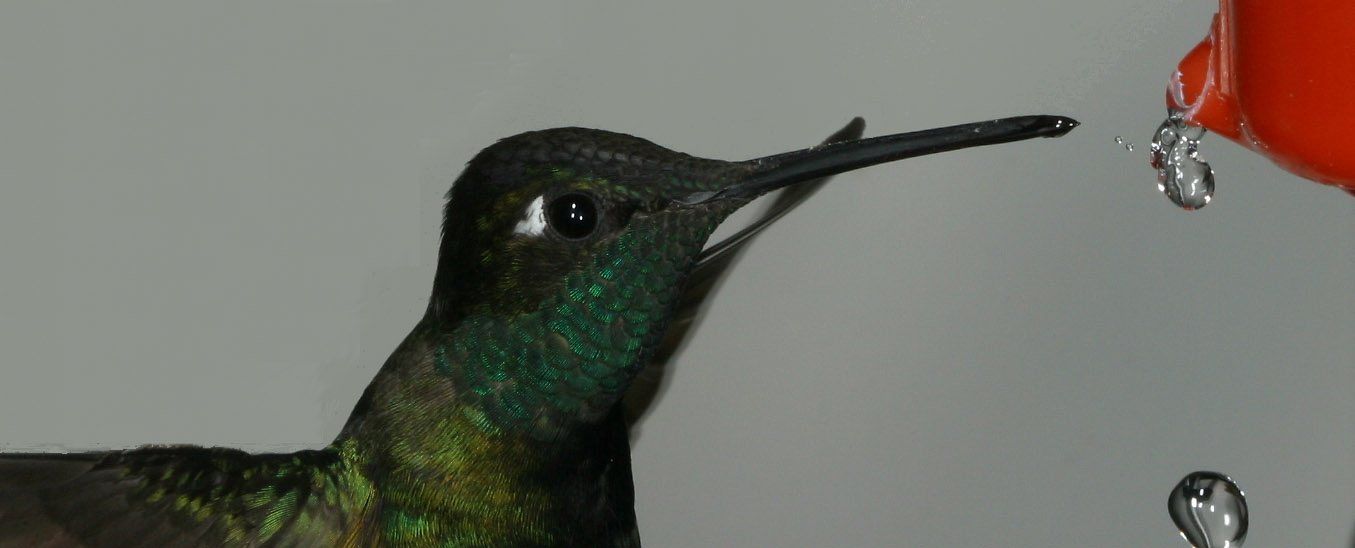 3396
3396
Bird was out of frame, but I enjoy the head and shoulder detail, and
the nectar drops. This is one time when I won't digitally remove the
feeder!
Other Arizona Birds
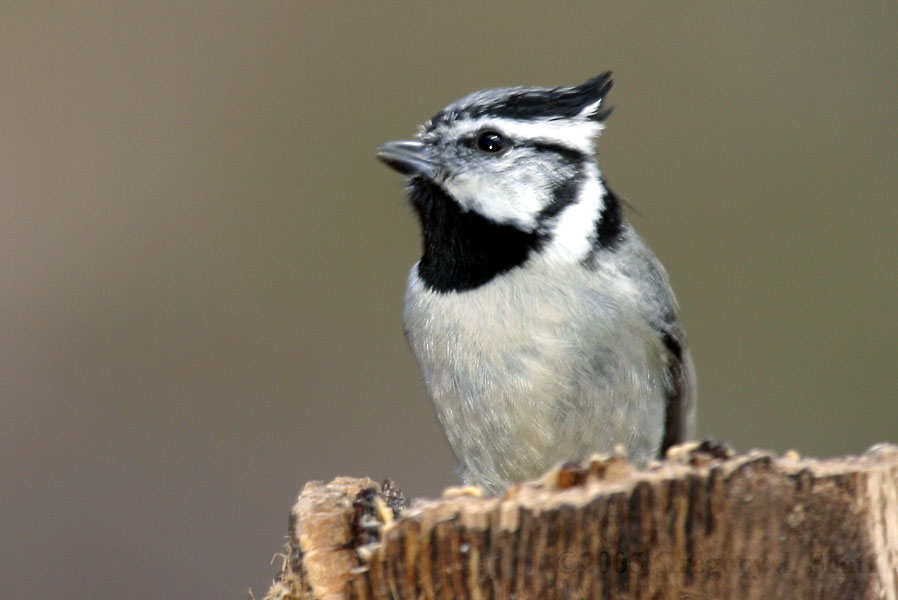 3517
3517
Bridle Titmouse - definitely should not be "published" here, but let's
say it's serving a place holder until I get a better shot.
A very bold little bird, eating sunflower seeds from the picnic table
right inches from where I was sitting.
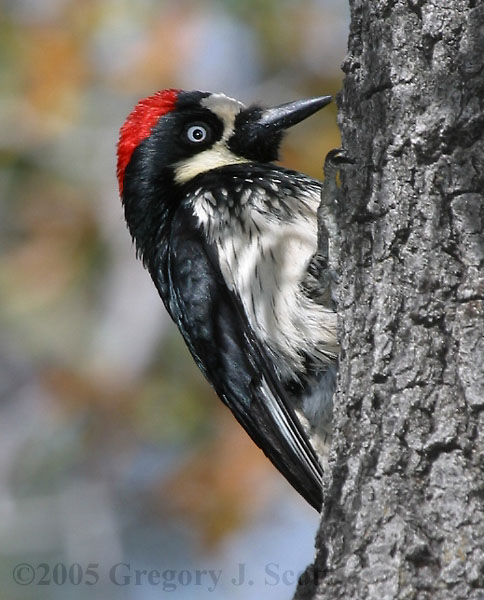 3521
3521
Acorn Woodpecker. This guy strikes me as a kind of "zoot suit" sharp
dresser, or maybe a tuxedo.
I think that it's his unusual white eye that pushes his vivid
coloration over the top.
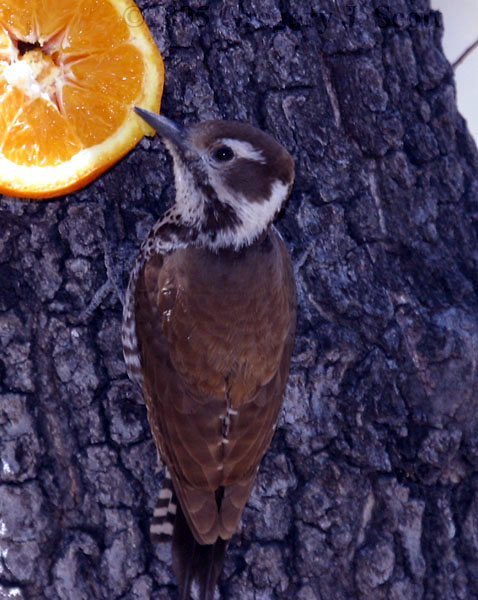 3611
3611
Arizona Woodpecker
 3583
3583
Alligator Pine. The bark is naturally "checkered" to resemble alligator
skin to some degree.
That's the top of my parent's VW camper on the right side of the image.
Oops. Always check the background. Always check the background.
Arizona Desert
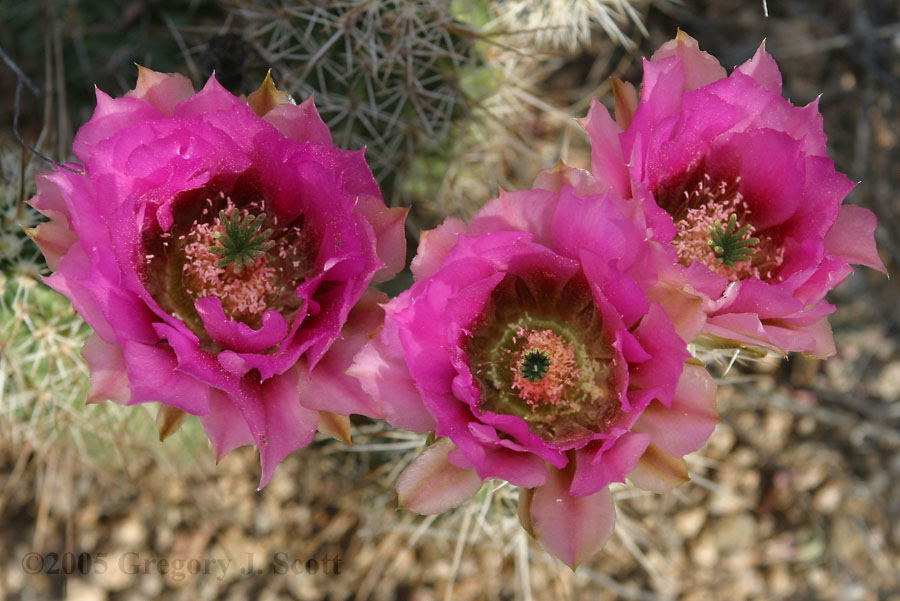 3684
3684
Cactus Rose
Arizona critters of other kinds.
Note to readers: I know that family album shots can be taxing,
but that's the cost of using this page...
There are just a few here, so plow on bravely, there are some
really nice shots yet to come, in spite of what follows.
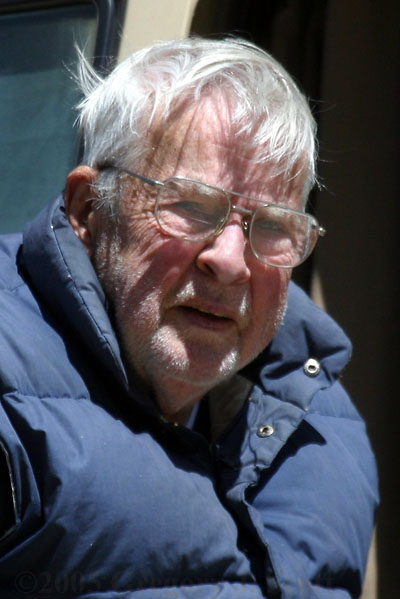 3476
3476
The deceptively dangerous grizzly photographer. This kind is known to
bear arms, which usuallly protrude from each side of the vest,
partially concealled by a shirt sleeve, though they are not seen in
this photograph. It is thought that the eye-enhancing objects may be
worn to mimic a "cuter" creature with eyes that appear larger in
proportion to the face. This may help lure human prey into debates
about equipment and technique. However, you'll note that without
the eye enhancers, this big guy would be downright beady-eyed, and such
encounters should be avoided by all except Jeff Irwin, and others of
similar courage and experience, or perhaps, stupidity. However, away
from their territorial domain, these creatures are often quite social,
and some folks have reputed to have tamed them and kept them for years
without any noticable harm whatsoever.
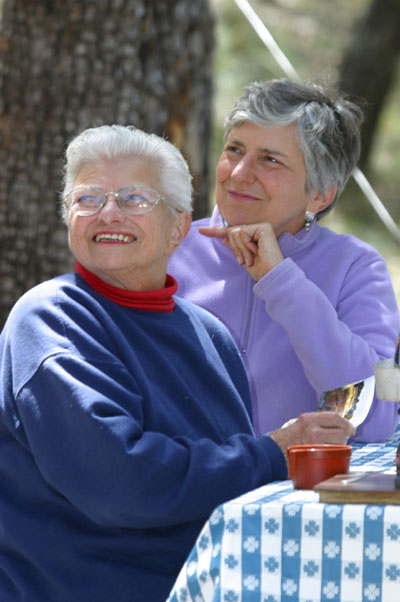 3483
3483
Smiling in a pleasant social exchange, or baring her fangs? The brave
or foolhardy person who may have tamed the grizzled photographer in the
previous photo displays her social skills, while being alert to the
potential photographic risks in her environment. Note that with her
attention diverted, she has the presence of mind to keep the photograph
firmly in hand, so that it cannot escape to wreck havoc.
Other species not directly related:
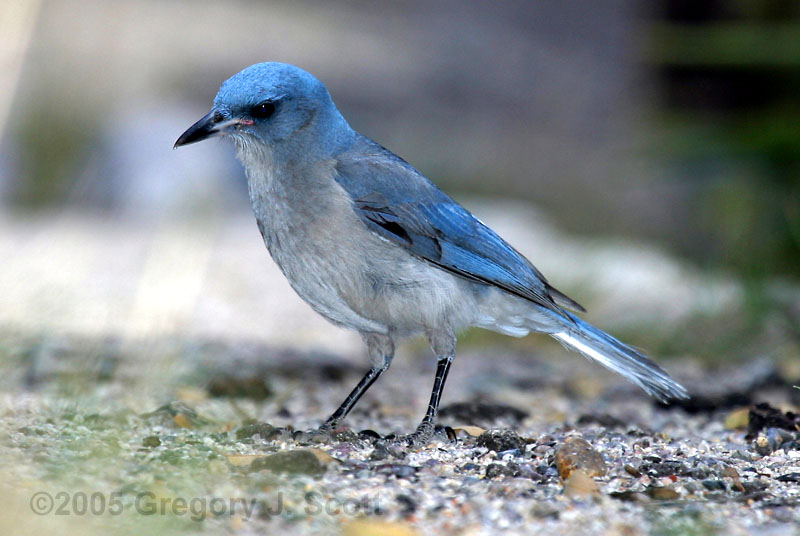 3515
3515
Mexican Jay
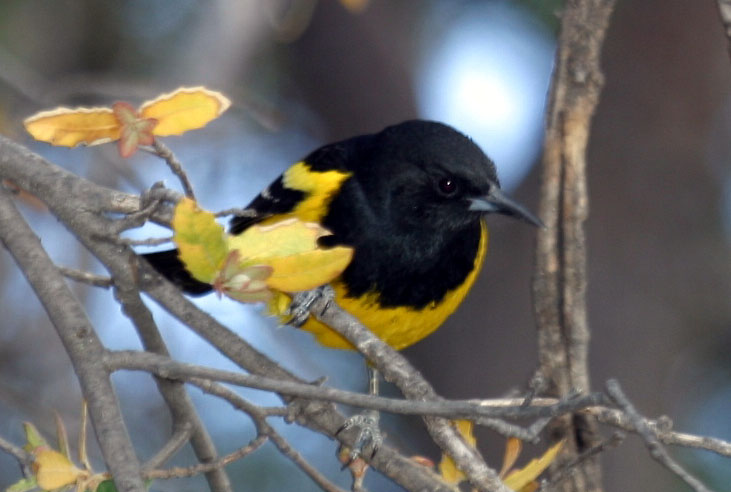 3545
3545
Scott's Oriole. Again, not sharp enough, but my best one so far...
New Mexico - Landscape

Eroded Mountain near Rock Hound State Park
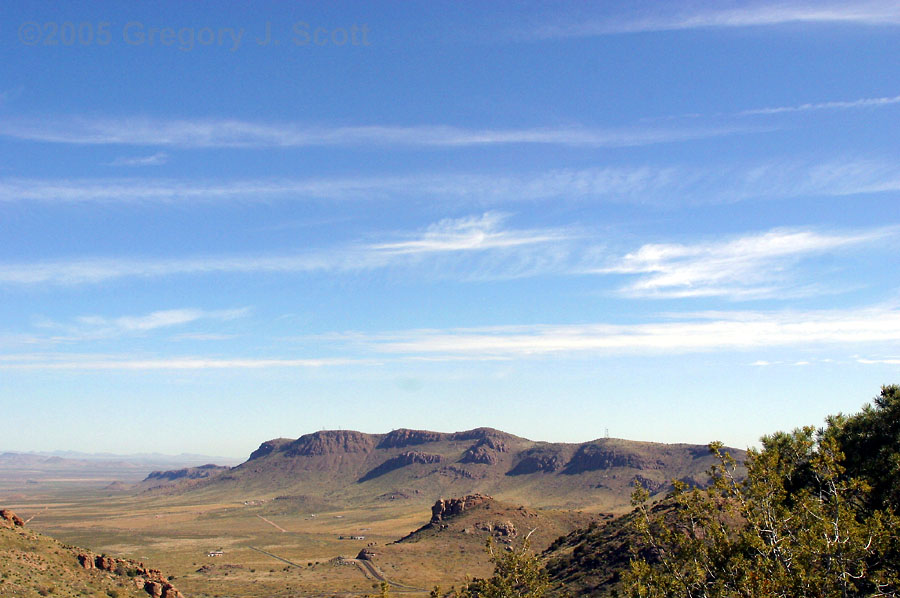 3848
3848
Spring Canyon unit of Rockhound State Park, New Mexico, southeast of
Deming, I think.
I walked just to the "scrub" line to shoot this photo. (Can't call it a
tree line, really!)
A small airplane flew throught the valley, but was too small to resolve
in another photo.
I was slightly above the plane.
Texas - Wildflowers
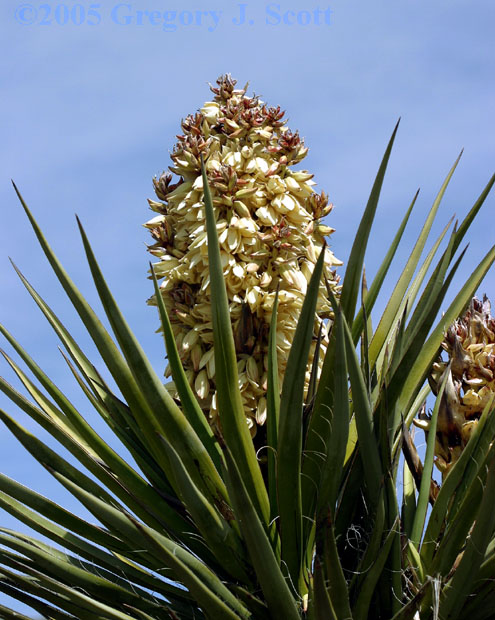 3242
3242
West Texas desert - blooming yucca
Texas Hill Country - North of Austin - Wildflowers by the highway
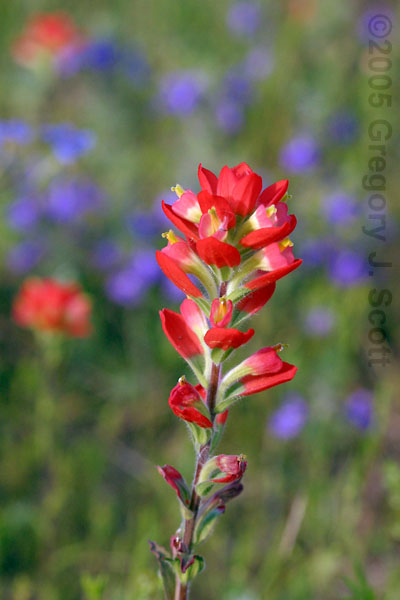 3876
3876
Indian Paintbrush, bluebonnets in the background.
Louisiana - Sabine National
Wildlife preserve - Wetland birds and other critters.
 3916
3916
A boat-tailed grackle (I think) just looks black in overcast light. If
your
monitor is the same as mine, there's some irridescence in the grackle's
neck and shoulders.
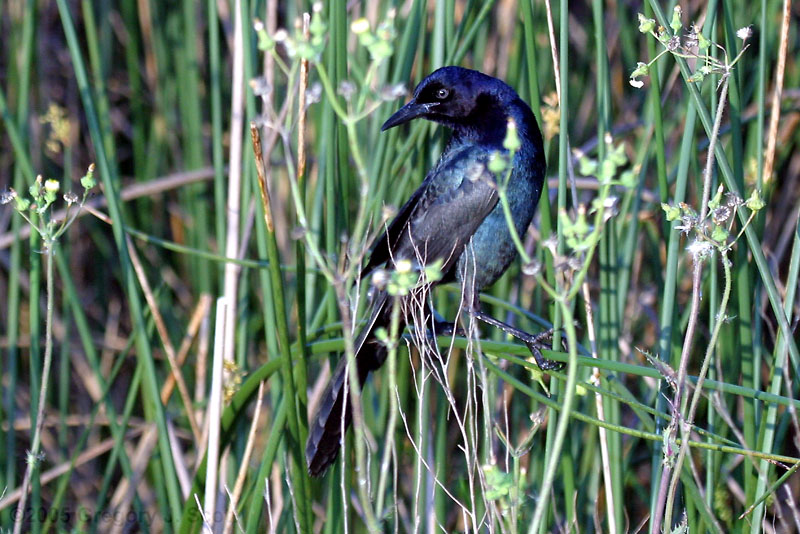 3918
3918
But in direct sunlight, a boat-tailed grackle's (I think) irridescensce
can be very colorful.
(Is color right? seems too blue...)
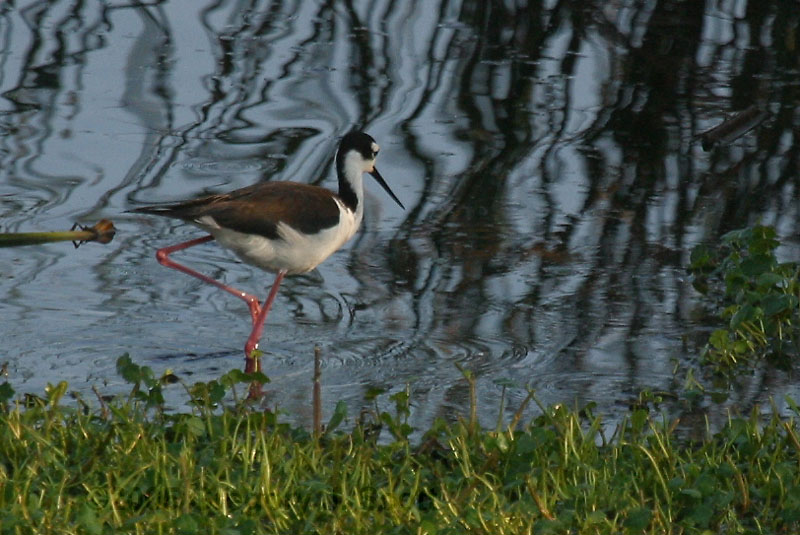 3924
3924
Black-necked Stilt - Himantopus mexicanus
 3933
3933
Black-Necked Stilt (Note: delete this image?)
Note to self: Include nutria, and flying birds, more wading birds here.
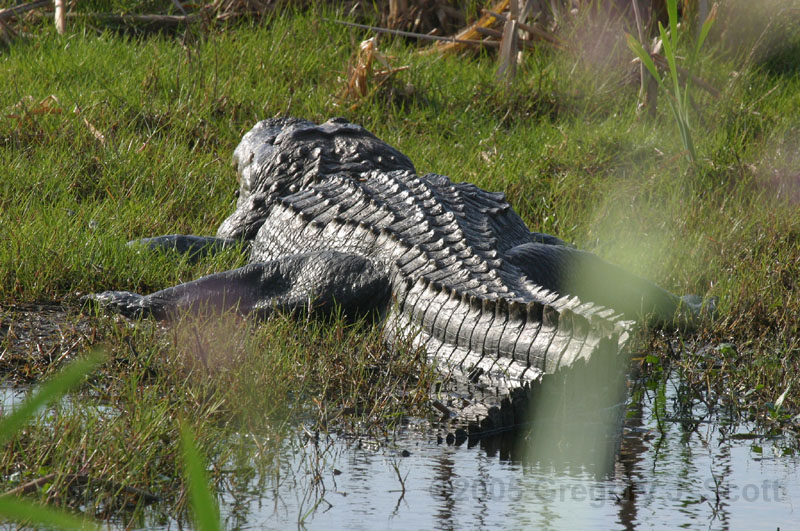 3952
3952
I found that the trick to spotting gators in this wetland was to took
carefully at any spot without birds. If there are no birds, then there
are likely to be gators. This one obviously isn't hiding, he's sunning,
perhpaps to raise his body temperature so he can move quickly enough to
catch slow, fat photographers, whose lenses aren't quite as long as
they think. I think I had my zoom at 400mm on this one, but I'm not
sure. He was no more than 20 yards from the trail.
 3961
3961
You would think that this was one nervous bunny, with the gators
everywhere.
But he just hung out on the trails, barely moving aside into the tall
grass when I passed by.
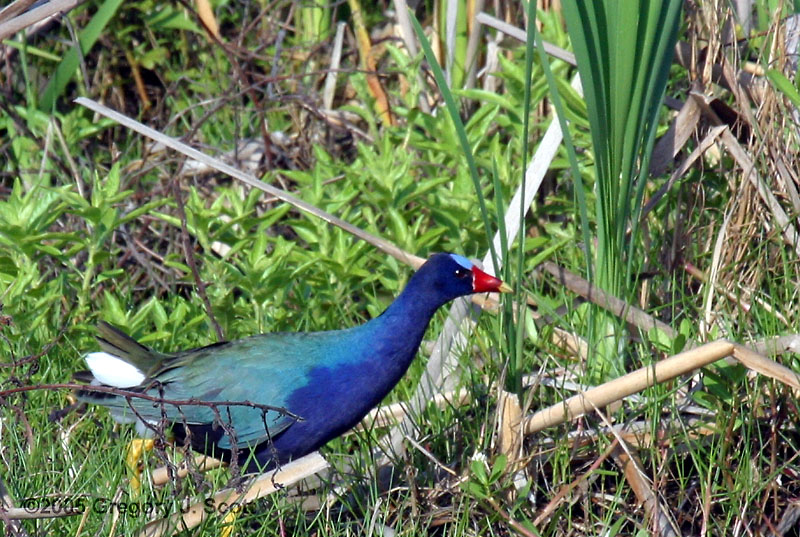 3964
3964
Purple Gallinule. Porphyrio Martinica.
I confess to bumping up the color intensity a bit on this photo, but
not much, I swear!
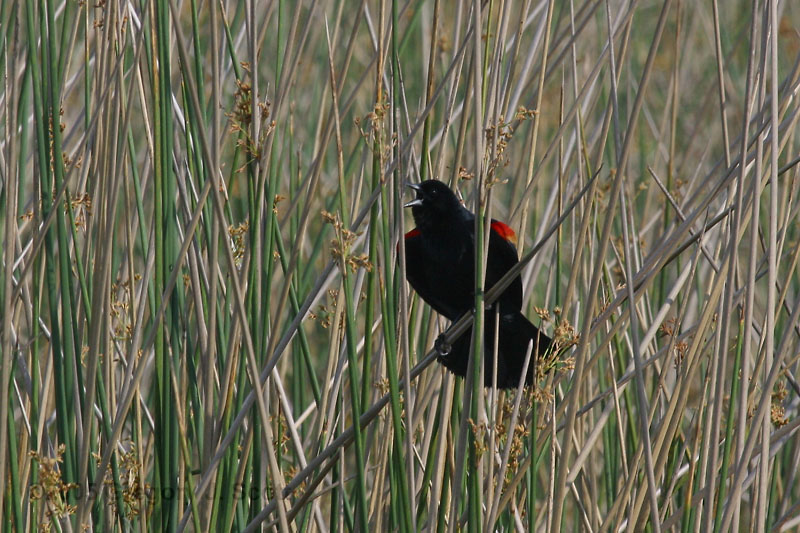 3968
3968
Red-winged Blackbird putting on a territorial display.
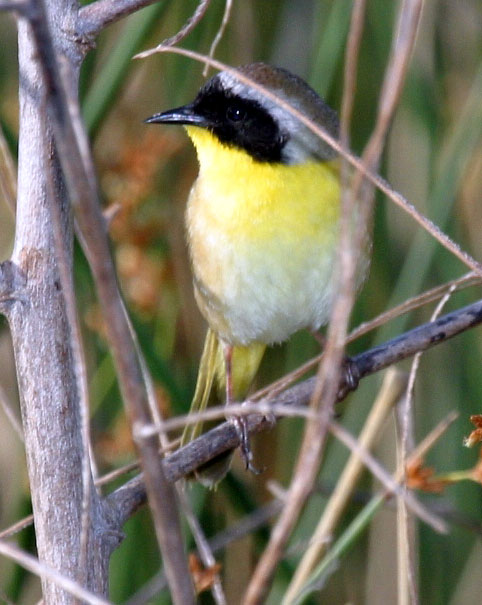 3950
3950
Common Yellowthroat - Geothlypis trichas
 3972
3972
A young gator practices invisibility. Even this guy was more difficult
to spot than you would think from the photo.
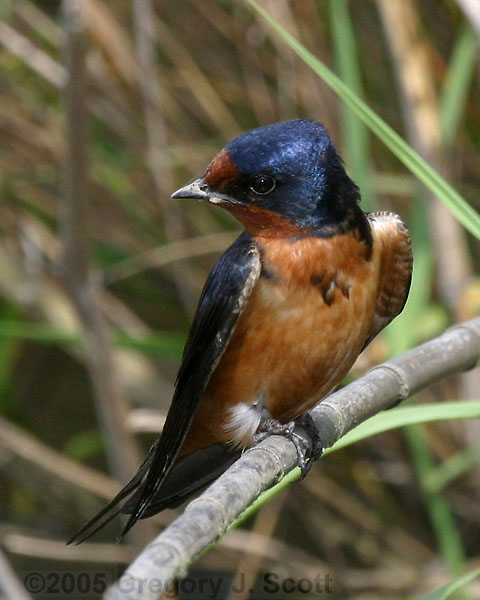 3994
3994
3994 Barn Swallow on Cane - this was taken with Canon IS 100-400
in
bright haze with on-camera flash.
The bird is perched on cane at the edge of the canal, and they have
nests in the shelter midway down the
path.
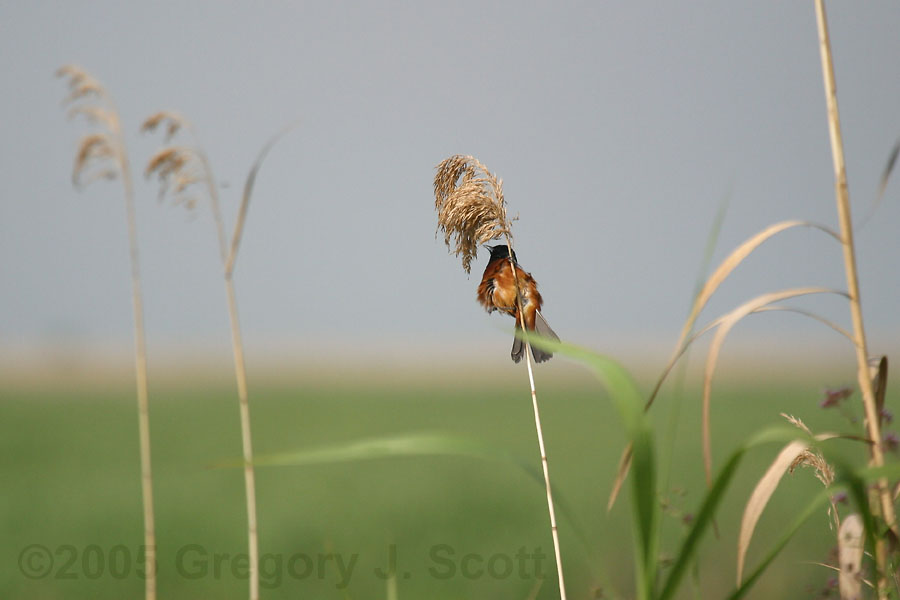 3981
3981
Orchard Oriole (I think) feeding on bugs on cane seed?
Icterus Spurius.
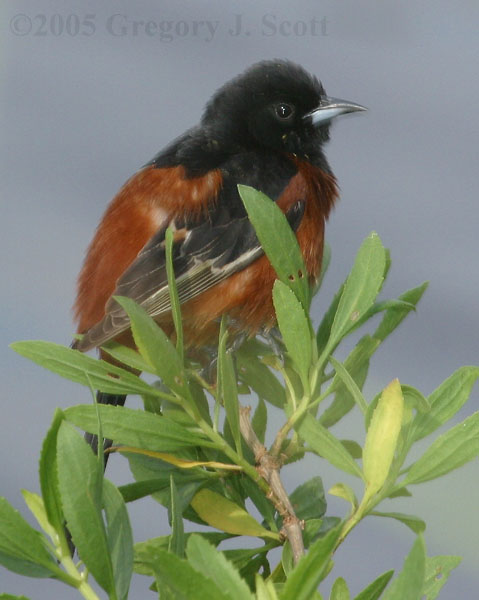 3982
3982
Orchard Oriole. Icterus Spurius. Same bird as above, this image was
used for the ID.
 3977
3977
Young gators in weeds and sun. The image has been adjusted in a
way to make the colors seem more balanced, but in the original image,
there is an overall green tint which hides the gators quite a bit. I'm
not sure if this is more accurate, or the original. Many people walked
by without ever seeing these animals, which were in "plain" sight no
more than 20 feet from the boardwalk near the canal.
Louisiana - Lake Fausse Pointe State Park - Ruby Throated Hummingbirds!
This park is just west of the Atchafalaya Basin, and east of
New Iberia, the capital of the Arcadian culture. It's a locale rich in
history, culture, natural beauty, wildlife, and food. If you follow the
levee road north from the park, you come to a fancy restraunt on the
right. Go in, and eat well. If you find a better place nearby, let me
know and I'll try it someday. Visiting in spring or fall may be
best, particularly if birding. If you like steam baths, then
consider the summer.
I had the opportunity to rescue a hummingbird just before I shot the
photos which follow. As I was setting up my "studio", a boy told me
that there was something I would want to see, and he showed me a
hummingbird that had
fallen into the water just out of reach from a boat dock. I quickly
shed wallet, cell phone, etc, and jumped in to retrieve the bird. I
thought the water wouldn't be over my head... Blub, blub, blub... So I
soddenly swam to the surface, cupped the bird in two hands, and managed
to keep bird and nose afloat to the dock, where an onlooker took
custody of the bird. We put him on a bird feeder to dry off, and I took
some seaweed off of his wings using a pine needle as a tool. (I had to
pick him back up for this task.) After about 15 minutes he was warm and
dry enough to fly, and was feeding and flying, and hopefully was fully
recovered.
On the other hand, I took over an hour to get dry enough to work and
back on track. During this time I read signs, which I had not
previously noticed, which prohibited swimming, and others which
prohibited feeding the gators... I suppose I could have broken both
rules at once... While I was drying off, I found three CF cards
in my pocket. I had already downloaded them to my computer, and so I
just
cleaned them out as best I could with some electronics cleaner I
had.They were just fine after they dried..
These birds are migrating north, and the park where I photograph them
has numerous well-tended feeders.
The birds were quite numerous, but refused to come to my feeders with
any regularity, since there were also many feeders without those
bothersome flashy thingies. To get these photos, I had to eventually
use one of the nature center's feeders for the "studio". There were
still other feeders available without flashy thingies, but having
fought for these feeders, I suppose they won't abandon them just
because of some annoying flashy/clicky thingies. (I saw "Men in Black"
not long before I wrote this.)
Ruby Throated Hummingbirds are also found in Georgia, but I've never
gotten mature male birds to pose in my own garden, unfortunately, and
I've never seen a concentration of this magnitude there. This park had
as many as 10 or 15 birds zipping about at one time.
Eventually, as my visitors mature, and my garden matures, I hope that
this condition changes. This year I planted two red buckeye trees in my
garden, in the hopes of luring springtime male migrants, which I have
never observed in the spring migration for any sustained visit.
Nectar Stealing bird:
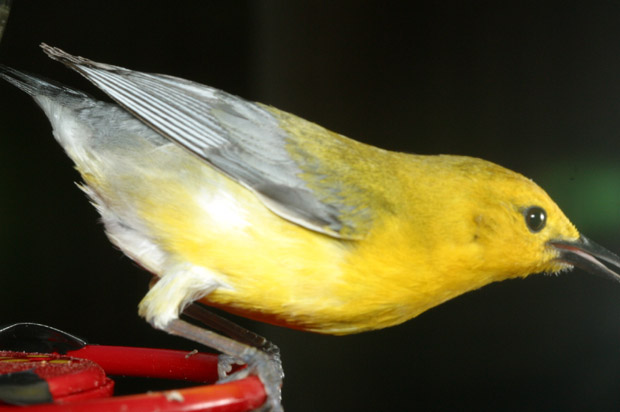 4074
4074
prothonotary warbler stealing nectar. The hummingbirds don't seem to
challenge him.
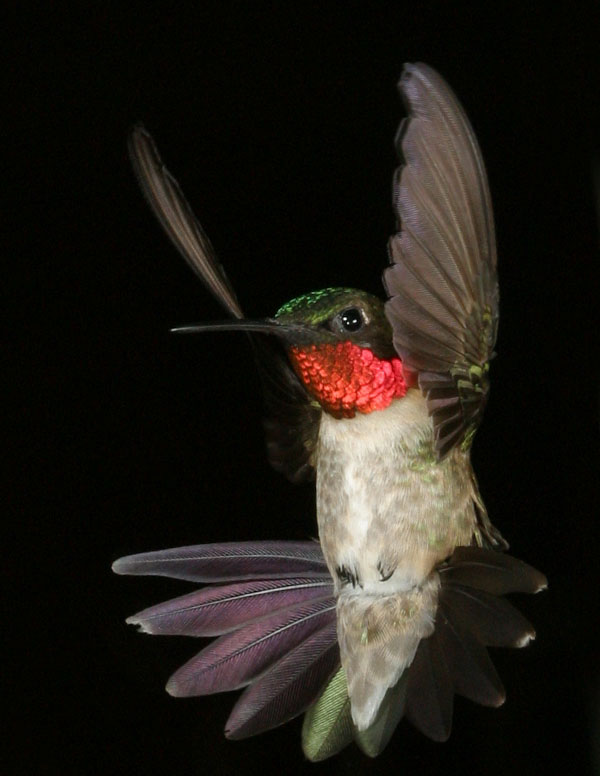 4117
4117
Male Ruby-Throated Hummingbird - Archilochus Colubris
Vertical pose, tail
splayed, wings up, with dark background.
This photo was taken without the white poster board I usually use for a
background. It illustrates the problem of "digital noise" quite
clearly. Shooting with a relatively high ISO value, perhaps about 800,
dark values in the image have digital noise, seen as "snow" in the
darkest portions of the image. This is the digital penalty for high ISO
images analagous to grain in high speed film. Nothing is "free" in
photography, and everything is a compromise. There is another
undiagnosed problem in this image. As you can tell from the eye
reflection, I was using 3 flashes, all approximately at the same
height, and at the same power. The center, dimmer image is from the
on-cameral flash, which was behind the two slave flashes, on the
camera. I had not yet set up the off-camera cable for the main flash,
either. I don't know why I have the "ghost" double image, most
noticable on the wing-tip on the right, but also on the left. Perhaps
the slave flashes did not synchronize properly with the master. I
haven't seen this before in my photos, and have not been able to
determine a likely cause for the problem.
 4170
4170
Ruby Throated Hummingbird Male - gear down, wings high forward,
tail back, taken from 3/4 profile, slightly above bird. This is my
sharpest photo of the season, with good depth of field overall. The
double image seen in the darker image above is also visisble here, but
much less severe in appearance, because the fainter "ghost" wing is
mostly lost against the bright background. I often see more minor
problems of this magnitude with non-simultaneous flash of in my
photos.
Technical notes: needs more white-space left and bottom, add a fake a
landing twig, background, target flower? Remove ghosting on upper right
wing.
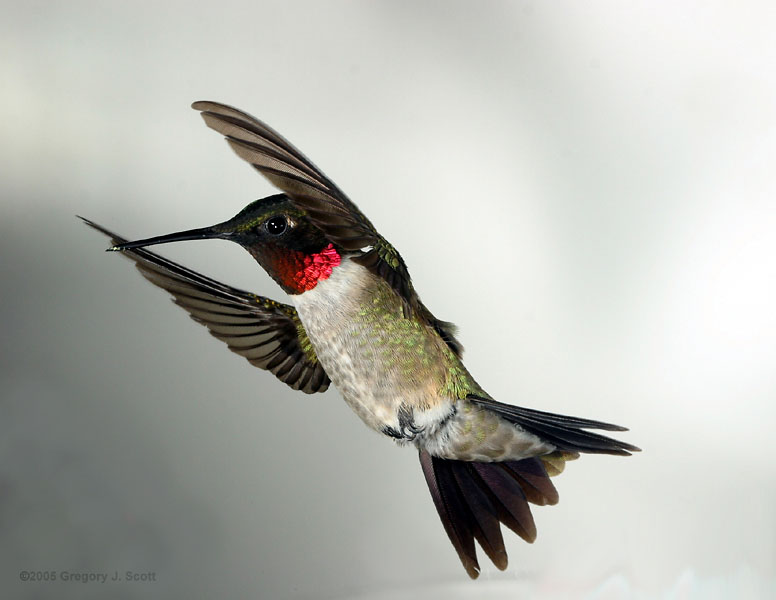 4244
4244
Male ruby throated hummingbird approaching a landing.
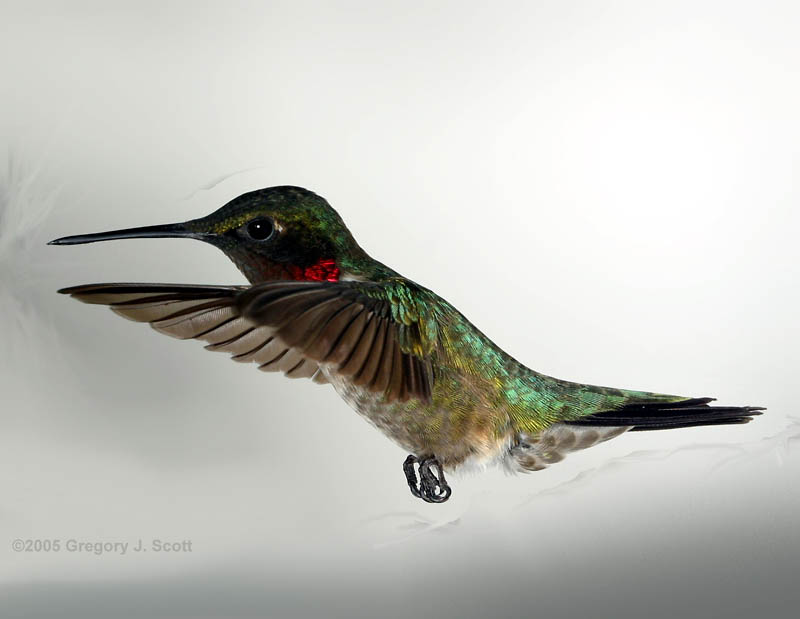 4191
4191
Male RTH. I don't have any photo that's more of a straight full-body
profile than
this one. This may be sharper than the one above. but it doesn't
"register" as sharp, somehow.
 4254
4254
This is a typical hummingbird fight photo.
There's always at least one that's out of frame and out of focus. Sigh.
Someday...
What made me decide to include it is the wonderful pose of the
defender.
The tail position makes it very clear that he's doing some very
acrobatic defense.
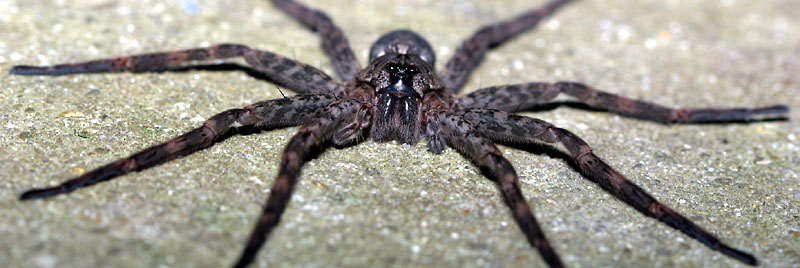 4276
4276
I shot hummingbirds until dark.
I suppose it was therefore my
inevitable Karma to encounter this thug as I was packing my equipment
afterwards.
This spider's leg span was nearly my hand span. I do have short, stubby
fingers. Sweet dreams...
Georgia - Bluebird photos
These nesting bluebirds were photographed in a suburb north of Atlanta,
GA
They were taken about the last week in april, 2005.
The bluebirds were nesting in a bird house about 20 feet from a
mealworm feeding station.
This was at a suburban residence with two occupied bluebird houses,
adjacent to a golf course.
Homes in the neighborhood had partially wooded lots with large mature
trees, pine and hardwood.
The homeowner feeds mealworms at least twice a day during nesting
season.
The female bird did not pay much attention to the flash, but the male
was more reticent, limiting his visits to the feeder when photos were
being taken. He did come more frequently when I was not taking photos,
and yet more frequently when I was not at the end of my remote control
"tether". The female's behavior was much less affected. She quickly
came to disregard me, camera, flash, tripods, and stepladder with
background cardboard. I was about 35 feet away from the mealworm
feeder, generally.
The 3 flashes were very close to the bird, set on 1/128th power.
The lens used is mostly a 100mm Canon F2.8 macro lens.
ISO was set on about 400 or 800.
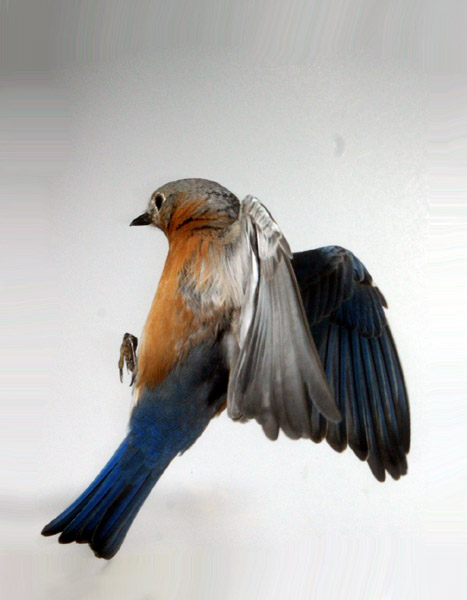 4377
4377
Eastern Bluebird - Sialis Sialis
Landing (Female?) wings back, asymetrical adjustments
for landing.
Tail forward posture is somewhat unusual. Very close to
landing.
 4349
4349
Bluebird about to land. Wings forward, side view.
I like the way the flight feathers are splayed apart in this image.
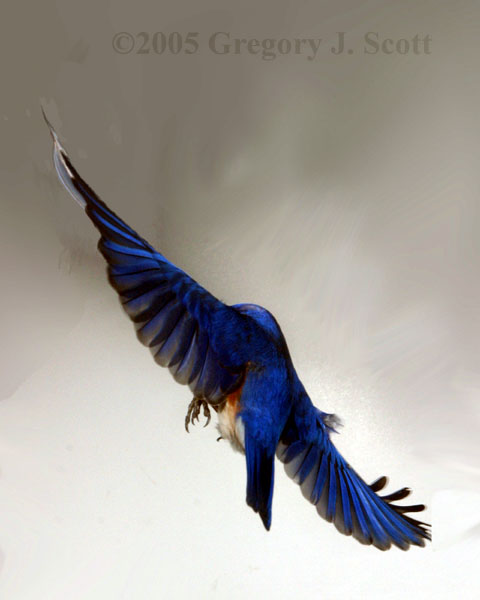 4359
4359
This is definitely my favorite bluebird image, so far, in spite of the
fact that you can't see the bird's "face".
I'm very fond of the curve of the trailing edge of the wings, and the
"flaps" visible at the wing tips.
As far as that goes, I like the curve from the head, neck, back and
tail.
The separation in the feathers reduces turbulance at low speeds, and
steep angle of attack that
is necessary when landing.
The reduction in turbulance increases the lift, which helps compensate
for the lower speed, allowing an easier landing.
 3268
3268 3603
3603 3605
3605 3592
and 3359
3592
and 3359 4254
4254 3396
3396 3517
3517 3521
3521 3611
3611 3583
3583 3684
3684 3476
3476 3483
3483  3515
3515  3545
3545
 3848
3848 3242
3242 3876
3876 3916
3916 3918
3918 3924
3924 3933
3933 3952
3952 3961
3961 3964
3964 3968
3968 3950
3950 3972
3972 3994
3994 3981
3981 3982
3982 3977
3977 4074
4074 4117
4117 4170
4170  4244
4244 4191
4191 4254
4254 4276
4276 4377
4377  4349
4349
 4359
4359